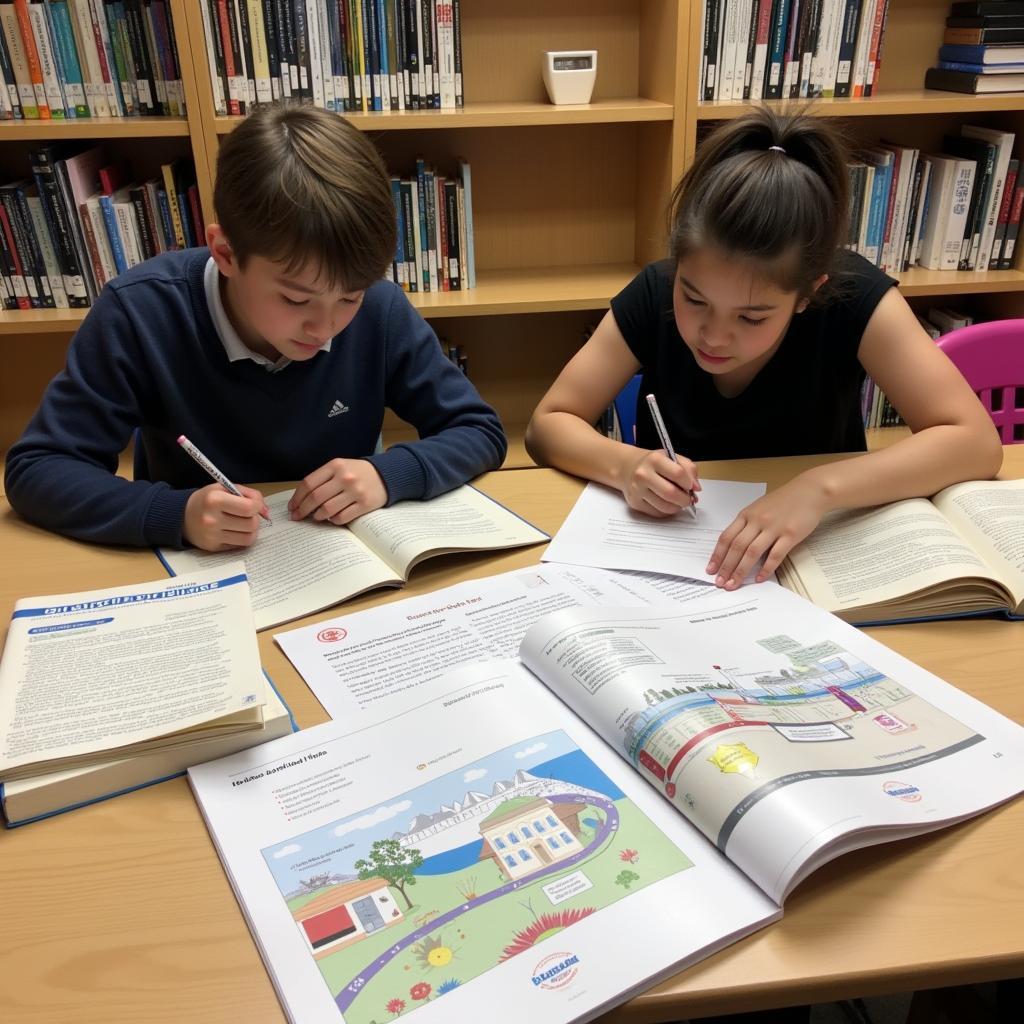Giỏ hàng hiện tại chưa có sản phẩm nào!

Hydroelectric Power Generation Process IELTS
Hydroelectric power generation is a renewable energy source that harnesses the power of flowing water to generate electricity. Understanding the hydroelectric power generation process is a common topic in the IELTS exam, particularly in the Writing Task 1 (describing a process) and Speaking sections. This article will delve into the process in detail, providing you with the necessary vocabulary and understanding to tackle related IELTS questions effectively.
How Hydroelectric Power is Generated
The hydroelectric power generation process relies on the conversion of potential energy stored in water held at a height into kinetic energy and ultimately into electrical energy. This conversion involves several key steps.
-
Water Storage: Water is collected and stored in a reservoir, usually behind a dam. The height of the dam determines the potential energy of the water. The higher the dam, the greater the potential energy.
-
Water Intake: Water is then channeled from the reservoir through an intake structure. This structure controls the flow of water and prevents debris from entering the system.
-
Penstock: The water travels down a large pipe called a penstock. As the water flows down the penstock, its potential energy is converted into kinetic energy, increasing its velocity.
-
Turbine: At the bottom of the penstock, the high-velocity water strikes the blades of a turbine, causing it to rotate. The turbine is connected to a generator.
-
Generator: The rotating turbine spins the generator, which converts the mechanical energy into electrical energy.
-
Transformer: The electrical energy produced by the generator is then stepped up to a higher voltage by a transformer to reduce transmission losses.
-
Transmission Lines: The high-voltage electricity is transmitted through power lines to homes, businesses, and industries.
-
Tailrace: After passing through the turbine, the water is discharged back into a river or stream through a tailrace.
Key Components of a Hydroelectric Power Plant
Understanding the function of each component is crucial for explaining the hydroelectric power generation process in the IELTS exam.
- Dam: Creates a reservoir and controls water flow.
- Reservoir: Stores water and provides the potential energy source.
- Intake: Regulates water flow into the penstock.
- Penstock: Carries water from the reservoir to the turbine.
- Turbine: Converts the kinetic energy of water into mechanical energy.
- Generator: Converts mechanical energy into electrical energy.
- Transformer: Increases the voltage of the electricity for efficient transmission.
- Transmission Lines: Carry electricity to consumers.
- Tailrace: Returns water to the river or stream.
Advantages and Disadvantages of Hydroelectric Power
Hydroelectricity is a clean and renewable energy source, but it also has its drawbacks.
Advantages:
- Renewable and sustainable
- No greenhouse gas emissions during operation
- Reliable and controllable power output
- Can be used for flood control and water storage
Disadvantages:
- Environmental impact on aquatic ecosystems
- Displacement of communities due to reservoir creation
- High initial construction costs
- Dependence on water availability
Hydroelectric Power and the IELTS Exam
The hydroelectric power generation process is a common topic in IELTS, especially in Task 1 of the Writing section. You might be asked to describe a diagram illustrating the process. Being familiar with the vocabulary and the steps involved is crucial for achieving a high band score. Practice describing the process using the vocabulary and steps outlined in this article.
“Understanding the intricacies of the hydroelectric process is paramount for success in the IELTS exam,” says Dr. Anh Nguyen, a leading IELTS instructor. “Students should focus on accurately describing each stage using precise vocabulary and clear explanations.”
 Ôn thi IELTS về quá trình tạo điện năng thủy điện
Ôn thi IELTS về quá trình tạo điện năng thủy điện
Conclusion
The hydroelectric power generation process is a fascinating example of how we can harness natural resources to generate clean energy. By understanding the process and the key vocabulary associated with it, you’ll be well-prepared to answer any related questions in the IELTS exam. Mastering this topic will not only boost your IELTS score but also enhance your understanding of a vital renewable energy source.
FAQ
- What is the main source of energy in hydroelectric power generation? Flowing water.
- What is the role of a penstock? It carries water from the reservoir to the turbine.
- How does a turbine generate electricity? It spins a generator, converting mechanical energy to electrical energy.
- What are the environmental concerns related to hydroelectric power? Impact on aquatic ecosystems and displacement of communities.
- Is hydroelectric power a renewable energy source? Yes.
- What is the purpose of a dam in a hydroelectric power plant? It creates a reservoir and controls water flow.
- What happens to the water after it passes through the turbine? It is discharged back into a river or stream through a tailrace.
Khi cần hỗ trợ hãy liên hệ Số Điện Thoại: 0372960696, Email: tuyet.sixt@gmail.com Hoặc đến địa chỉ: 260 Cầu Giấy, Hà Nội. Chúng tôi có đội ngũ chăm sóc khách hàng 24/7.